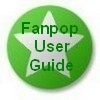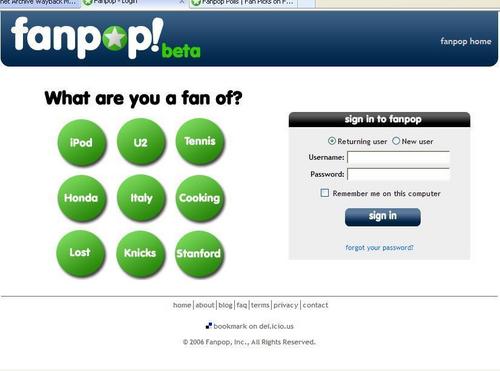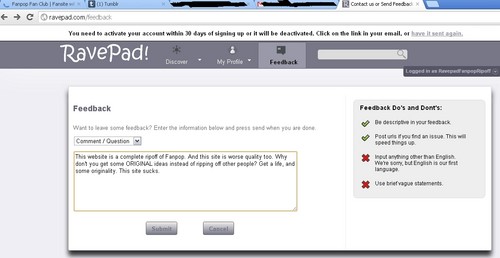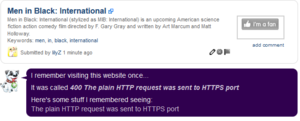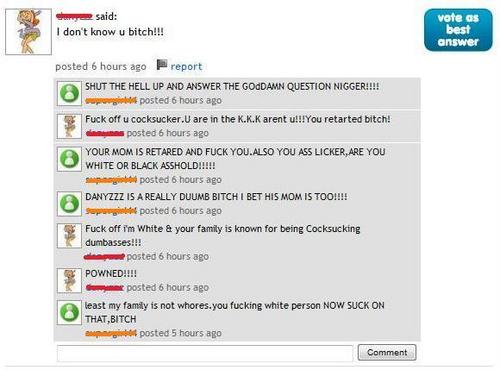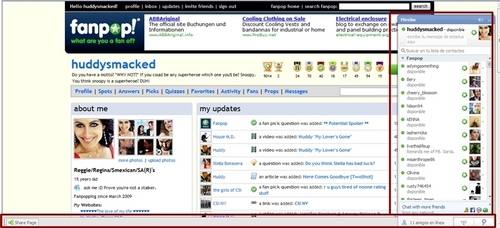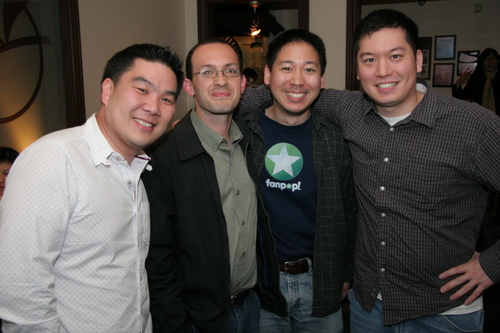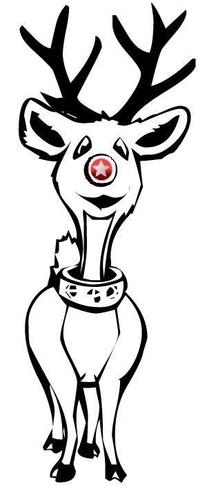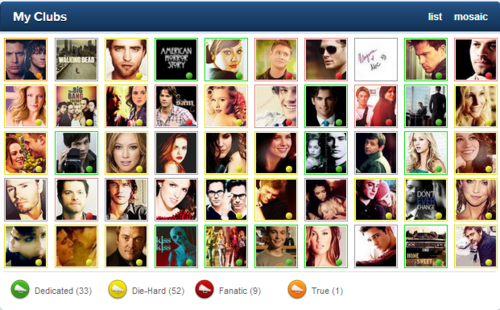This part of my link details how 당신 can format text in your postings on Fanpop, and the 기사 was last edited (to fix typographical errors) on 17 July 2013.
TEXT FORMATTING
Those of 당신 who have written soapbox 기사 before may have seen the guide that 팬팝 provides for formatting text. But maybe you've never written a soapbox 기사 또는 never noticed the key, and have been wondering how some users manage to make their text 더 많이 interesting. With these tags, 당신 can:
* boldface your text
* put your text in italics
* underline your text
* have your text point to a different 주소 link
Soapbox authors can also use 태그 to embed pictures into the bodies of their articles. But what not many users realize is that all of these 태그 - with the exception of the image embedding - can be used in other places on Fanpop.
HOW TO FORMAT YOUR TEXT
If 당신 are familiar with hypertext markup language (HTML), the 태그 will seem pretty familiar to you. Let's assume for a moment that you're not familiar with HTML tags, though.
In order to format any of the text 당신 type on Fanpop, 당신 need to include a start tag at the beginning of the text 당신 want to look different, and then put a close tag at the end of the text 당신 want to look that way.
For example, in regular HTML, there is a thing called the "blink" tag (which is very annoying and should never be used in a serious web page - I offer it here only as an example). Simply put, any text marked with a blink tag (in normal HTML) will blink on and off, like a fluorescent light when the power is first applied. In HTML and the 팬팝 markup 태그 alike, 당신 apply 태그 like this:
1) 당신 type a special symbol to indicate to the system that a tag is starting. In HTML, this tag is the < 또는 "bracket" symbol. On Fanpop, it is the [ 또는 "square bracket" symbol.
2) Then 당신 type the name of the tag. In our example, the word "blink" is the name of the blink tag. On Fanpop, 당신 have the following basic tags:
b
i
u
3) After the name of the tag, 당신 insert the opposite bracket symbol: > in HTML, ] on Fanpop.
These 태그 indicate where the formatting should start, so 당신 place it to the left of the first word 당신 want formatted in that way.
Thus, the text <blink> in an HTML file would indicate where the text should start blinking. But now that you've put in the start tag, how do 당신 put in the end tag, which tells the system where to stop that text formatting? Like this:
A) 당신 type the same sort of bracket: < in HTML, [ on Fanpop.
B) 당신 indicate that the tag is a close tag 의해 using the 앞으로 슬래쉬 key: /
C) 당신 insert the name of the tag just like in the start tag.
D) 당신 close with the opposite bracket: > in HTML, ] on Fanpop.
The close tag should come immediately after the text 당신 want to format, so that the start tag and close tag enclose the text 당신 want to format.
If 당신 wanted the text to say "This is blinking!" in HTML, for instance, 당신 would write:
<blink>This is blinking!</blink>
If 당신 want to write an explanation of your low rating on a picture ("Sorry, but this pic is really dull!"), 당신 could write it like this:
Sorry, but this pic is [i]really dull[/i]!
...which would look like this:
Sorry, but this pic is really dull!
또는 당신 could write it like this:
Sorry, but this pic is [u]really[/u] [b]dull[/b]!
...which would look like this:
Sorry, but this pic is really dull!
INSERTING UNIFORM RESOURCE LOCATORS (URLs)
Those are what I call the three "basic" text formatting tags:
boldface
italics
underline
But, as I mentioned earlier, 당신 can also embed URLs into your text. The tag name is "url", and the 태그 work the same way, except that 당신 also need to provide the actual 주소 of the site to which 당신 want to link. 당신 then put this link in the start tag with an "equals" sign. The close tag is unaffected.
For example, if 당신 wanted to link to the Neverending Story 포럼 game on Fanpop, 당신 would take the link link and put it in the start tag, to read like this:
[url=http://www.fanpop.com/spots/writing/forum/post/2421], then type the text 당신 wanted to be that link, then the close tag: [/url]. In that way, 당신 could write something about link and continue on without cluttering up the post with a long URL.
People know that they can click on links, and will do so if they're curious. Note to users seeing these hyperlinks, though: if 당신 have any reason to be suspicious of a link that someone has posted, most browsers will let 당신 see the 주소 without clicking on the link, but just hovering the 쥐, 마우스 cursor over the link. Then 당신 can read the 주소 and judge whether it feels 안전한, 안전 또는 not. Some 링그 (www.spamspamspamittyspam.com?counter) are going to seem suspect, and so 당신 shouldn't click on them.
Three things of interest for placing these 링그 on Fanpop:
i) The 주소 should be absolute. This means that 당신 should include the link at the beginning. This may not be necessary for all browsers, but it is good practice for people using older browsers, who would be unable to resolve a link like "fanpop.com" over "http://www.fanpop.com"
ii) In case it isn't obvious, the 주소 can be any URL, not just a 팬팝 one. That way, 당신 can point to link.
iii) If 당신 want to reference a particular passage from a particular thread of a particular forum, 당신 can link to the given page of that forum. For instance, 당신 could point to link, which is just the 상단, 맨 위로 page of that forum, leaving the user to read through multiple pages to get at the end 또는 any page in between, 또는 당신 could point to link, if 당신 wanted to reference, say, link's mention of Mrs. Doubtfire (or anything else on that page).
The way 당신 do it is simple: just insert /, then the number of the page, then a # and then "comments" after the 주소 of the base 포럼 thread. In the example above, we started with link's movie titles game: link.
Then, to point to page 4 of the thread, we added /4#comments to the end of that, making link as the 주소 to point to page four of that thread.
Finally, I should note that, if 당신 don't want to substitute text for some obscure URL, 당신 can still just type the URL, and 팬팝 will recognize it as an 주소 and will format that text for 당신 as a link (see the link and www, above: a link that points nowhere - my apologies to any users who actually clicked on that!)
WHERE 당신 CAN USE TAGS
All this is well and good, but where can 당신 use these 태그 on Fanpop? The most obvious place is in soapbox 기사 like this one. But, 당신 can also use these 태그 in any 코멘트 box on the site, which includes 포럼 thread postings, responses to 포럼 threads, and 코멘트 on videos, links, images, picks, and articles. Basically, if the content is already there and 당신 want to post a comment, 당신 can do it with tags.
WHERE 당신 CAN'T USE TAGS
당신 can't use these 태그 in the titles 또는 descriptions of anything 당신 add to Fanpop: links, articles, videos, images, 질문 또는 their picks. Basically, if 당신 are adding content to the site, 당신 cannot format the name 또는 the 설명 of the content with tags. 당신 can take some comfort in the fact that 당신 can immediately 코멘트 on your addition, and in that 코멘트 당신 can use tags, though.
A WORD OF CAUTION/BEST PRACTICE
So, now 당신 know how to format your text to be 더 많이 interesting, and carry greater emphasis than just putting *asterisks around words*! But realize that too much emphasis can quickly get to be annoying, much like the <blink> tag I mentioned earlier: use that on an HTML page these days, and 당신 will get pilloried. Much like TYPING IN ALL CAPS FOR EXTENDED PERIODS, using too much boldface, italics 또는 underlining only annoys people, so use these items with moderation. Two final things to keep in mind:
a) Remember to always use a close tag to stop whatever text formatting 당신 start (if 당신 don't, the entire contents of your posting will be formatted for emphasis after the start tag)
and
b) Try to stick to a conservative ratio of emphatic 또는 formatted text to regular text, like no 더 많이 than 10% of what 당신 write should be formatted as bold/italic/underlined, 또는 linked to a different URL. Doing otherwise will likely get 당신 reported 의해 your fellow 팬팝 users.
With all that said, enjoy!
*******************************
Here's 링그 to other parts of the guide for your quick reference:
* link
* 1: link
* 2: link.
* 3: link
* 4: Picks: this is the generic name both for the 투표 질문 that 당신 see on the site and for the 답변 당신 can pick to that question. Papa has created a link.
* 5: link
* 6: link
* 7: link
당신 may also want to see:
* link feature
* link
TEXT FORMATTING
Those of 당신 who have written soapbox 기사 before may have seen the guide that 팬팝 provides for formatting text. But maybe you've never written a soapbox 기사 또는 never noticed the key, and have been wondering how some users manage to make their text 더 많이 interesting. With these tags, 당신 can:
* boldface your text
* put your text in italics
* underline your text
* have your text point to a different 주소 link
Soapbox authors can also use 태그 to embed pictures into the bodies of their articles. But what not many users realize is that all of these 태그 - with the exception of the image embedding - can be used in other places on Fanpop.
HOW TO FORMAT YOUR TEXT
If 당신 are familiar with hypertext markup language (HTML), the 태그 will seem pretty familiar to you. Let's assume for a moment that you're not familiar with HTML tags, though.
In order to format any of the text 당신 type on Fanpop, 당신 need to include a start tag at the beginning of the text 당신 want to look different, and then put a close tag at the end of the text 당신 want to look that way.
For example, in regular HTML, there is a thing called the "blink" tag (which is very annoying and should never be used in a serious web page - I offer it here only as an example). Simply put, any text marked with a blink tag (in normal HTML) will blink on and off, like a fluorescent light when the power is first applied. In HTML and the 팬팝 markup 태그 alike, 당신 apply 태그 like this:
1) 당신 type a special symbol to indicate to the system that a tag is starting. In HTML, this tag is the < 또는 "bracket" symbol. On Fanpop, it is the [ 또는 "square bracket" symbol.
2) Then 당신 type the name of the tag. In our example, the word "blink" is the name of the blink tag. On Fanpop, 당신 have the following basic tags:
b
i
u
3) After the name of the tag, 당신 insert the opposite bracket symbol: > in HTML, ] on Fanpop.
These 태그 indicate where the formatting should start, so 당신 place it to the left of the first word 당신 want formatted in that way.
Thus, the text <blink> in an HTML file would indicate where the text should start blinking. But now that you've put in the start tag, how do 당신 put in the end tag, which tells the system where to stop that text formatting? Like this:
A) 당신 type the same sort of bracket: < in HTML, [ on Fanpop.
B) 당신 indicate that the tag is a close tag 의해 using the 앞으로 슬래쉬 key: /
C) 당신 insert the name of the tag just like in the start tag.
D) 당신 close with the opposite bracket: > in HTML, ] on Fanpop.
The close tag should come immediately after the text 당신 want to format, so that the start tag and close tag enclose the text 당신 want to format.
If 당신 wanted the text to say "This is blinking!" in HTML, for instance, 당신 would write:
<blink>This is blinking!</blink>
If 당신 want to write an explanation of your low rating on a picture ("Sorry, but this pic is really dull!"), 당신 could write it like this:
Sorry, but this pic is [i]really dull[/i]!
...which would look like this:
Sorry, but this pic is really dull!
또는 당신 could write it like this:
Sorry, but this pic is [u]really[/u] [b]dull[/b]!
...which would look like this:
Sorry, but this pic is really dull!
INSERTING UNIFORM RESOURCE LOCATORS (URLs)
Those are what I call the three "basic" text formatting tags:
boldface
italics
underline
But, as I mentioned earlier, 당신 can also embed URLs into your text. The tag name is "url", and the 태그 work the same way, except that 당신 also need to provide the actual 주소 of the site to which 당신 want to link. 당신 then put this link in the start tag with an "equals" sign. The close tag is unaffected.
For example, if 당신 wanted to link to the Neverending Story 포럼 game on Fanpop, 당신 would take the link link and put it in the start tag, to read like this:
[url=http://www.fanpop.com/spots/writing/forum/post/2421], then type the text 당신 wanted to be that link, then the close tag: [/url]. In that way, 당신 could write something about link and continue on without cluttering up the post with a long URL.
People know that they can click on links, and will do so if they're curious. Note to users seeing these hyperlinks, though: if 당신 have any reason to be suspicious of a link that someone has posted, most browsers will let 당신 see the 주소 without clicking on the link, but just hovering the 쥐, 마우스 cursor over the link. Then 당신 can read the 주소 and judge whether it feels 안전한, 안전 또는 not. Some 링그 (www.spamspamspamittyspam.com?counter) are going to seem suspect, and so 당신 shouldn't click on them.
Three things of interest for placing these 링그 on Fanpop:
i) The 주소 should be absolute. This means that 당신 should include the link at the beginning. This may not be necessary for all browsers, but it is good practice for people using older browsers, who would be unable to resolve a link like "fanpop.com" over "http://www.fanpop.com"
ii) In case it isn't obvious, the 주소 can be any URL, not just a 팬팝 one. That way, 당신 can point to link.
iii) If 당신 want to reference a particular passage from a particular thread of a particular forum, 당신 can link to the given page of that forum. For instance, 당신 could point to link, which is just the 상단, 맨 위로 page of that forum, leaving the user to read through multiple pages to get at the end 또는 any page in between, 또는 당신 could point to link, if 당신 wanted to reference, say, link's mention of Mrs. Doubtfire (or anything else on that page).
The way 당신 do it is simple: just insert /, then the number of the page, then a # and then "comments" after the 주소 of the base 포럼 thread. In the example above, we started with link's movie titles game: link.
Then, to point to page 4 of the thread, we added /4#comments to the end of that, making link as the 주소 to point to page four of that thread.
Finally, I should note that, if 당신 don't want to substitute text for some obscure URL, 당신 can still just type the URL, and 팬팝 will recognize it as an 주소 and will format that text for 당신 as a link (see the link and www, above: a link that points nowhere - my apologies to any users who actually clicked on that!)
WHERE 당신 CAN USE TAGS
All this is well and good, but where can 당신 use these 태그 on Fanpop? The most obvious place is in soapbox 기사 like this one. But, 당신 can also use these 태그 in any 코멘트 box on the site, which includes 포럼 thread postings, responses to 포럼 threads, and 코멘트 on videos, links, images, picks, and articles. Basically, if the content is already there and 당신 want to post a comment, 당신 can do it with tags.
WHERE 당신 CAN'T USE TAGS
당신 can't use these 태그 in the titles 또는 descriptions of anything 당신 add to Fanpop: links, articles, videos, images, 질문 또는 their picks. Basically, if 당신 are adding content to the site, 당신 cannot format the name 또는 the 설명 of the content with tags. 당신 can take some comfort in the fact that 당신 can immediately 코멘트 on your addition, and in that 코멘트 당신 can use tags, though.
A WORD OF CAUTION/BEST PRACTICE
So, now 당신 know how to format your text to be 더 많이 interesting, and carry greater emphasis than just putting *asterisks around words*! But realize that too much emphasis can quickly get to be annoying, much like the <blink> tag I mentioned earlier: use that on an HTML page these days, and 당신 will get pilloried. Much like TYPING IN ALL CAPS FOR EXTENDED PERIODS, using too much boldface, italics 또는 underlining only annoys people, so use these items with moderation. Two final things to keep in mind:
a) Remember to always use a close tag to stop whatever text formatting 당신 start (if 당신 don't, the entire contents of your posting will be formatted for emphasis after the start tag)
and
b) Try to stick to a conservative ratio of emphatic 또는 formatted text to regular text, like no 더 많이 than 10% of what 당신 write should be formatted as bold/italic/underlined, 또는 linked to a different URL. Doing otherwise will likely get 당신 reported 의해 your fellow 팬팝 users.
With all that said, enjoy!
*******************************
Here's 링그 to other parts of the guide for your quick reference:
* link
* 1: link
* 2: link.
* 3: link
* 4: Picks: this is the generic name both for the 투표 질문 that 당신 see on the site and for the 답변 당신 can pick to that question. Papa has created a link.
* 5: link
* 6: link
* 7: link
당신 may also want to see:
* link feature
* link

I heart pick additions! Truly!


